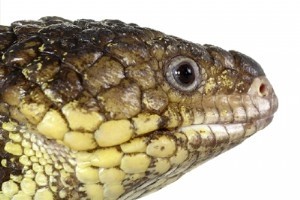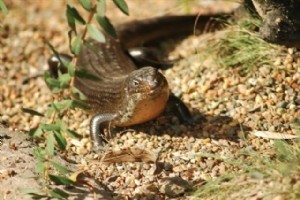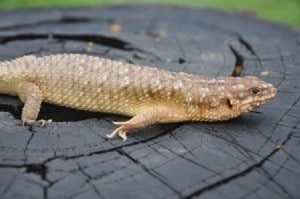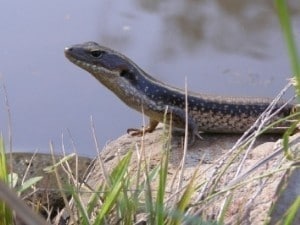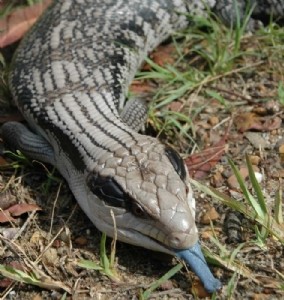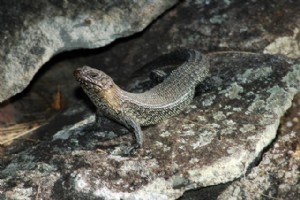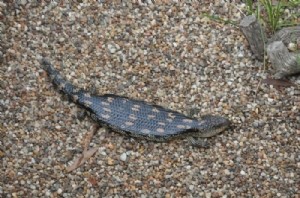-
Shingleback
Scientific Name: Trachydosaurus rugosus A close relative of the more familiar bluetongue, the shingleback is an extremely distinctive member of the lizard family known as skinks. Its two most striking features are the short rounded tail, which bears a remarkable resemblance to the head end to confuse predators and the
Land Mullet
Scientific Name: Egernia major Although it has a fishy name, the land mullet is actually the largest member of the skink family of lizards. Large adults can reach 50cm or more in total length. The name comes from the smooth, shiny, black fish-like scales that cover the body. Juvenile land
Hosmer’s skink
Scientific Name: Egernia hosmeri Hosmer’s skinks are stocky skinks that grow to 23 centimetres long, nearly half of which is the tail. The scales on their body have 3-4 sharp points (or keels) and the scales on the tail each have a long spine. Their colouring is light yellow-brown to
Eastern Water Skink
Scientific Name: Eulamprus quoyii The eastern water skink is a relatively large skink, some specimens reaching nearly 30cm in length. They are fast, active, streamlined lizards which are recognised by their shiny scales and beautiful green-gold colour on the back. The sides are black with small white spots, while the
Eastern Bluetongue
Scientific Name: Tiliqua scincoides scincoides The eastern bluetongue is one of the most familiar reptiles in Australia. Large specimens may reach 60cm in total length. The legs are small and can often be overlooked, a situation which sometimes means the harmless bluetongue, with its large triangular head, is mistaken for
Cunningham’s Skink
Scientific Name: Egernia cunninghami Cunningham’s skink is a large, prickly lizard usually around 25-30cm in length. The colour varies from those which are almost totally black with a few white spots, to others that are predominantly grey with black bands or others which have an overall rusty red colour. Each
Blotched Bluetongue
Scientific Name: Tiliqua nigrolutea The blotched bluetongue grows to between 40-60cm in total length, about one third of which is tail. Like its close relative, the eastern bluetongue, the broad, fleshy tongue is vivid blue in colour and is used as a warning display to would-be predators. The body is

